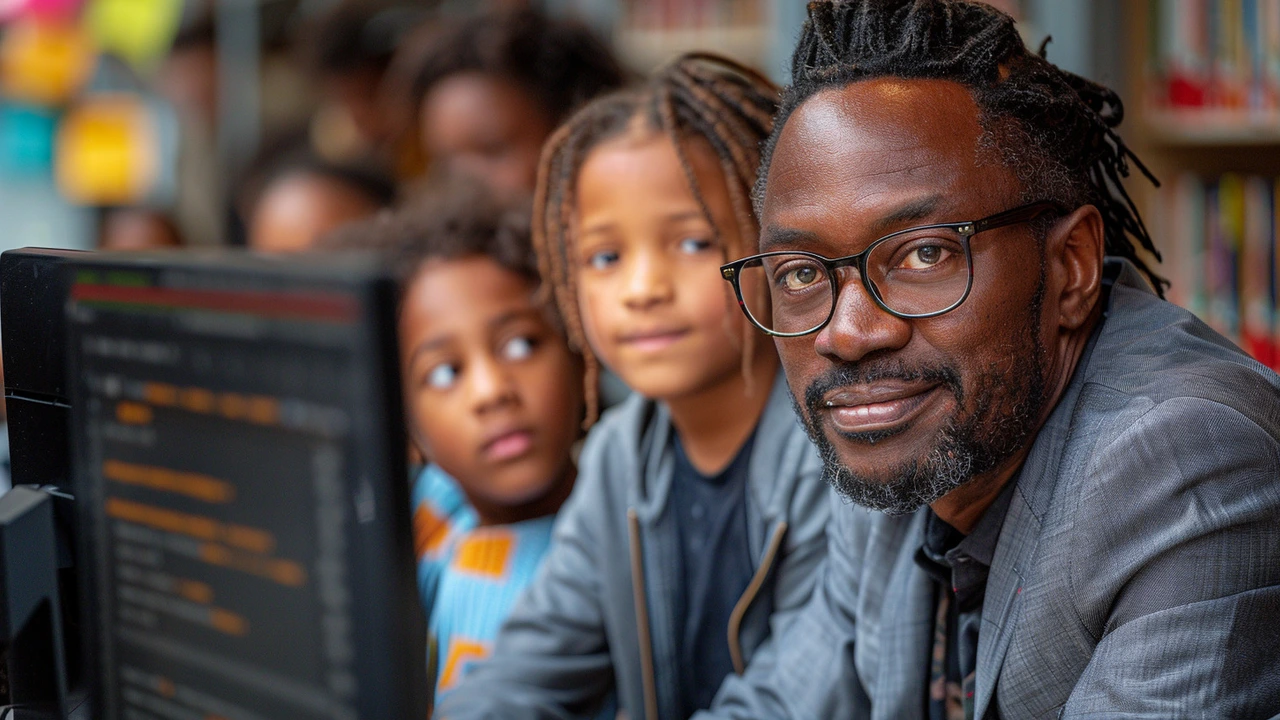Decoding Propaganda with ChatGPT: Insights into Modern Media Studies

As we navigate an increasingly digital world, the bombardment of information from various media sources can sometimes overwhelm us. It's not just about the volume, but also about the veracity of the content we consume daily. This is where Artificial Intelligence (AI), and more specifically, tools like ChatGPT, come into play.
These AI-driven tools are not just reshaping how we understand and interact with information, but they're also revolutionizing the field of media studies. They offer a new lens through which we can examine the contents of contemporary media, uncover hidden biases, and distinguish subtle propaganda from straightforward news.
- The Role of AI in Media Analysis
- Challenges in Detecting Propaganda
- Practical Tips for Using ChatGPT
- Future of Media Studies with AI
The Role of AI in Media Analysis
The realm of media studies has traditionally been influenced by human intuition and qualitative analysis. However, the recent integration of Artificial Intelligence (AI) has introduced a groundbreaking shift in how media content is analyzed. AI technologies, such as natural language processing and machine learning, enable the analysis of large volumes of media data with unprecedented speed and accuracy. This capability is essential for identifying trends, detecting biases, and unpacking the layers of modern propaganda.
One of the pioneering tools in this regard is ChatGPT, which leverages a form of AI known as transformers. These are models designed to understand and generate human-like text based on the input they receive. This ability makes ChatGPT an invaluable asset for media analysts who strive to decode complex narratives and identify the presence of subtle propaganda techniques in news articles, blogs, and even social media posts.
For instance, AI can quickly analyze the sentiment of articles across different publications to identify potential biases or slants in reporting. This kind of analysis, which would take humans considerably longer to perform, can be accomplished in minutes with AI, allowing for real-time media monitoring. This swift response is crucial in the fast-paced environment of media consumption where timing often influences public opinion significantly.
In addition to quantitative data analysis, AI tools like ChatGPT assist researchers and journalists in achieving a deeper qualitative understanding. By identifying key patterns and inconsistencies in data, ChatGPT helps expose potential manipulative strategies hidden within the text. This analysis is further advanced by AI's ability to learn from previous data, enhancing its predictive capabilities over time and providing richer insights into media discourse.
Challenges in Detecting Propaganda
Identifying propaganda in the digital age poses significant challenges even with advanced tools like ChatGPT. Propaganda is often intertwined ingeniously with facts, making the separation sophisticated and intricate. The first hurdle is the sheer volume and velocity of information. News today travels faster than ever, and its omnipresence across a multitude of channels adds layers of complexity to its analysis.
Technological sophistication in creating content means propaganda is no longer just biased articles or distorted facts. It now includes deepfakes, manipulated videos, and AI-generated texts that mirror human writing-style closely. This blurring of lines between real and fake content complicates the task for researchers and AI alike. Moreover, what makes detecting propaganda even more cumbersome is the subtlety of biases. These biases can frequently manifest in nuanced ways that are not overtly detectable without deep analytical capabilities.
Another critical challenge is the role of echo chambers in modern media consumption. Individuals often consume information that aligns with their pre-existing beliefs. This selective exposure can reinforce stereotypes and deepen cognitive biases, ensuring that propaganda achieves its desired effect. Addressing this issue requires not just AI technology, but also a concerted effort in education and media literacy to cultivate critical thinking skills among the public.
Social media platforms fuel the spread of propaganda by allowing content to be shared swiftly and without rigorous scrutiny, amplifying the echo chambers,' say experts in media studies.AI applications like ChatGPT are getting better at context comprehension and sentiment analysis, which are pivotal in distinguishing normal discourse from propagandist content. However, the precision of these technologies in understanding complex human emotions and the subtleties of language remains a challenge.
Practical Tips for Using ChatGPT
When it comes to leveraging ChatGPT for media analysis, the approach isn't merely about firing questions at an AI. It begins with understanding the tool's capabilities and setting up the right inquiries to extract the most relevant and accurate information. ChatGPT, developed by OpenAI, can simulate conversation and generate text based responses, making it an invaluable partner in decoding complex narrative techniques used in media.
To begin with, always clarify your questions. Ambiguity can lead to misinterpretation even by advanced AI. Clearly specified inquiries help in generating precise answers. For example, instead of asking 'What is propaganda?', it's more effective to ask, 'How is propaganda typically used in political news reporting?'. This clarity helps the AI focus its search on specific elements.
Next, consider enhancing ChatGPT's capabilities by integrating it with other software or databases. This could involve setting up ChatGPT to access contemporary news databases or integrating it with tools that analyze linguistic patterns. This integration broadens its analytical capabilities, making it an even more powerful tool for media studies.
It’s equally important to regularly update the information and training sets provided to ChatGPT. AI models like this learn from continually updated data sets, which keeps them relevant in a fast-changing world. By ensuring that ChatGPT has the latest data, it can provide insights that are in line with current media trends and propaganda techniques.
Keep a critical mindset when interpreting AI outputs. No AI, ChatGPT included, is infallible. While it can provide quick and detailed responses, the accuracy can sometimes be skewed depending on the data it has been trained on. Users should cross-verify AI findings with trusted sources before making any conclusive judgments using these tools.
Lastly, for those involved in educative roles or media literacy training, consider using ChatGPT as a teaching aid. It can help students or trainees engage in interactive learning through role-playing different scenarios on recognizing media bias and propaganda. This active engagement can be a fun way to hone critical thinking and media analysis skills.
Future of Media Studies with AI
The evolution of media studies is tightly intertwined with advances in technology, particularly artificial intelligence. As AI technologies like ChatGPT become more sophisticated, their ability to analyze vast amounts of data rapidly and with high accuracy is changing the landscape of media research. Scholars and analysts are now equipped with tools that can detect patterns and anomalies in data that were previously undetectable by human efforts alone. This capability introduces a new era where biases in media can be identified and addressed with unprecedented precision.
In the context of propaganda analysis, AI's role is becoming indispensable. By automating the detection of subtle cues and patterns within text and multimedia content, AI systems help researchers uncover the nuanced ways in which information is often manipulated. This assists not only in academic endeavors but also in practical applications such as journalism and social media moderation. The use of AI in these fields helps maintain the integrity of information that reaches the public, ensuring a more informed and less biased population.
Looking forward, we can anticipate several developments in the intersection of AI and media studies. One significant advancement lies in the enhancement of AI's natural language processing capabilities, which are expected to understand and interpret human language with even greater nuance. As these technologies evolve, their integration into media studies curricula will likely become standard practice, equipping future media analysts with the necessary tools to tackle the challenges of the digital age head-on.
Another key area of growth will be the ethics of AI in media studies. As reliance on AI grows, so does the need for robust ethical frameworks to govern its use. This will involve critical discussions about privacy, consent, and the potential for AI to be misused, ensuring that its deployment enhances societal good without infringing on individual rights. It's an exciting, albeit challenging, frontier that will require the collaborative effort of technologists, ethicists, and media professionals.



